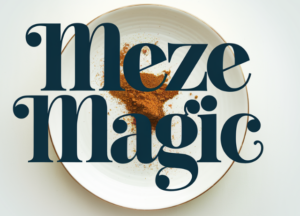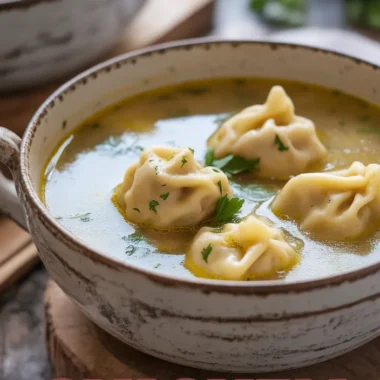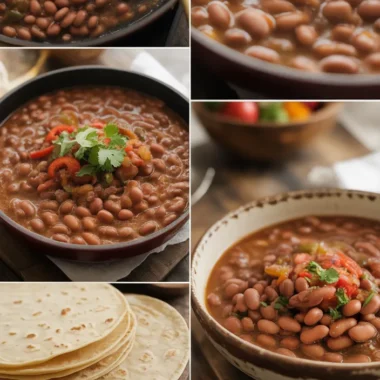I serve Beef Cheeks In Red Wine with the braising liquid pureed into a thick, glossy gravy that reveals surprising layers of savory complexity.
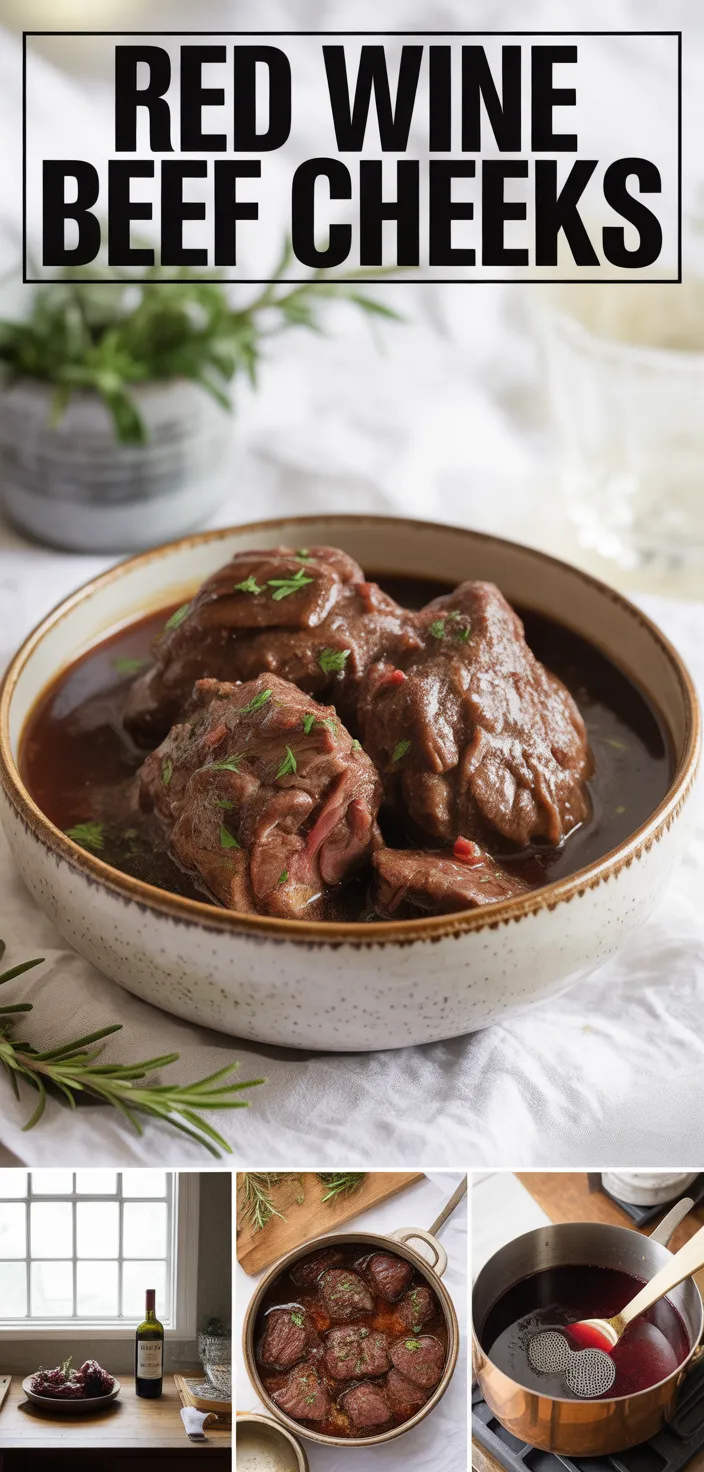
I never expected beef cheeks to make me this greedy, but after one pot of beef cheeks braised until they fall apart in a rich red wine sauce I’m hooked. I’ve been messing with Slow Cooking Meat for years and this Beef Cheeks In Red Wine idea feels like cheating, the sauce becomes almost spoonable and hides so many quiet deep flavours without shouting.
There’s something a little savage about digging into meat that tender, you get this weird proud grin and wonder how simple things can taste so huge. Not fancy, just dangerously good and makes you want to know more.
Ingredients
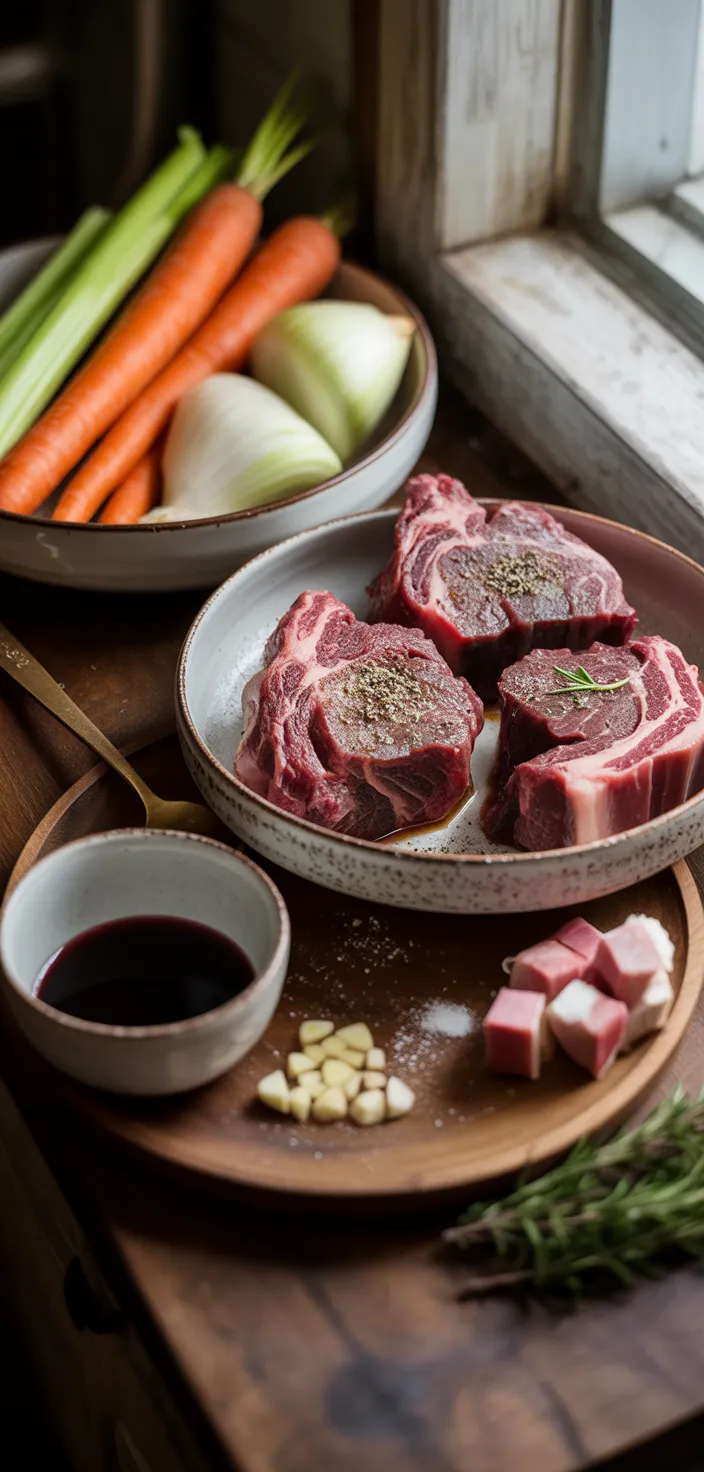
- Beef cheeks: Rich in collagen and protein, they turn melt-in-your-mouth when slow cooked, very hearty.
- Red wine: Adds acidity and deep fruit flavours, tannins help build a glossy sauce, moderate calories.
- Pancetta or bacon: Gives salty, smoky depth, adds fat for richness, not essential but highly recommended.
- Carrots: Add sweetness and fibre, they mellow in long cooks and thicken sauce naturally.
- Garlic: Boosts savoury aroma and umami, small amount goes a long way when cooked.
- Tomato paste: Concentrated umami and acidity, helps thicken and deepen colour of the sauce.
- Butter (finishing): Finishing with butter adds silkiness and sheen, a little makes sauce taste richer.
Ingredient Quantities
- 1.5 kg beef cheeks, trimmed (about 3 to 4 large cheeks)
- Salt and freshly ground black pepper, to taste
- 2 tbsp plain flour, for dusting
- 2 tbsp olive oil
- 100 g pancetta or bacon, diced (optional, adds extra flavour)
- 1 large onion, finely chopped
- 2 carrots, peeled and diced
- 2 celery stalks, diced
- 4 garlic cloves, crushed
- 2 tbsp tomato paste
- 750 ml dry red wine (1 bottle), a full bodied variety like Cabernet or Shiraz
- 500 ml beef stock (or enough to nearly cover the cheeks)
- 2 bay leaves
- 4 sprigs fresh thyme or 1 tsp dried thyme
- 1 sprig fresh rosemary
- 1 tbsp Worcestershire sauce
- 1 tbsp brown sugar or honey (optional, to balance acidity)
- 2 tbsp unsalted butter (optional, for finishing the sauce)
- Fresh parsley, chopped, to serve
How to Make this
1. Pat the beef cheeks dry, trim any excess fat or sinew, season generously with salt and pepper then lightly dust all over with the plain flour.
2. Heat the olive oil in a large heavy ovenproof pot (Dutch oven) over medium-high heat. Brown the cheeks in batches so they get a good crust, about 3 to 4 minutes per side. Don’t overcrowd the pan. Transfer browned cheeks to a plate and keep juices.
3. If using pancetta or bacon, add it to the pot and fry until the fat is rendered and pieces are golden. Scoop out and set aside with the cheeks if you want.
4. Add the chopped onion, carrots and celery to the pot and sweat gently until soft and beginning to colour, about 8 minutes. Stir in the crushed garlic and tomato paste and cook another 1 to 2 minutes to lose the raw taste.
5. Pour in the red wine to deglaze, scraping up all the brown bits from the bottom of the pot. Bring to a boil and reduce the wine by about half, 8 to 12 minutes, this concentrates the flavour.
6. Add the beef stock (enough to nearly cover the cheeks), bay leaves, thyme, rosemary, Worcestershire sauce and the brown sugar or honey if using. Return the cheeks (and pancetta if used) plus any resting juices to the pot, bring to a simmer.
7. Cover the pot and transfer to a preheated oven at 160°C (320°F). Braise for 3 to 4 hours until the cheeks are meltingly tender and easily pierced with a fork. You can alternatively simmer gently on the stove top, covered, for the same time.
8. Remove the cheeks to a plate and keep warm. Strain or skim off any excess fat from the braising liquid, discard bay leaves and woody herb stems. Spoon the vegetables and braising liquid into a blender or use a stick blender and puree until silky smooth. For an extra glossy sauce, pass through a sieve.
9. Return the puréed sauce to the pot, simmer to reduce to a thick, gravy-like consistency. Mount with the unsalted butter if you like for a silky finish, then check seasoning and add more salt, pepper or a splash of sugar/honey if it needs balancing.
10. Nestle the cheeks back into the sauce to warm, or spoon sauce over when serving. Scatter chopped parsley on top and serve with mashed potatoes, polenta or crusty bread to mop up every bit.
Equipment Needed
1. Large heavy ovenproof pot (Dutch oven) for browning and braising the beef cheeks
2. Chef’s knife and cutting board to trim fat and chop the onion, carrots and celery
3. Tongs and a slotted spoon for turning the cheeks and removing bits from the pot
4. Large plate or tray to rest the browned cheeks and hold rendered pancetta or bacon
5. Wooden spoon or heatproof spatula for sweating veg and mixing in tomato paste
6. Measuring cups and spoons plus a liquid measuring jug for wine and stock
7. Blender or stick blender to puree the braising vegetables into a silky sauce
8. Fine mesh sieve and a ladle to strain and finish the sauce (optional for extra gloss)
9. Oven mitts or pot holders and a kitchen timer to keep things safe and on schedule
FAQ
Slow Cooked Beef Cheeks In Red Wine Sauce Recipe Substitutions and Variations
- Beef cheeks: use brisket (same long slow cook and great gelatin), chuck roast (cheaper and shreddy), or beef short ribs (richer, a bit fattier) — all give that melt in your mouth result.
- Red wine: swap for extra beef stock plus 1–2 tbsp balsamic or red wine vinegar to get acidity, non alcoholic red wine, or a dark beer like porter/stout for deep maltiness.
- Pancetta or bacon: use prosciutto or smoked ham/speck, or leave out and add a splash of soy sauce plus a pinch of smoked paprika for umami and smoke if you want a non pork option.
- Plain flour (for dusting): cornstarch or arrowroot (gluten free, dust lightly), rice flour, or gluten free all purpose flour; or skip dusting and sear straight away if you need totally gluten free.
Pro Tips
– Pat the meat really dry and don’t skip the light flour dusting. Wet cheeks wont brown properly, and browning is what gives you that deep flavour. Brown in batches so the pan stays hot, then scrape up every browned bit, those bits are gold.
– Reduce the wine well before adding the stock, taste as you go. If it still tastes too sharp after braising, a little brown sugar or honey added at the end will calm it down without making it sweet. Use a full bodied wine, but nothing labelled “cooking wine”.
– Low and slow is everything here. Keep the liquid level just under the tops of the cheeks and braise until a fork slides in with almost no resistance. You can make it a day ahead, refrigerate, skim the solidified fat in the morning then reheat gently — the flavour always improves overnight.
– Finish the sauce properly: skim excess fat, purée the veg until silky and pass it if you want extra shine, then reduce until it coats a spoon. Stir in a knob of butter off the heat for a glossy, silky finish, and save any crisped pancetta or bacon to sprinkle on top for texture.
Slow Cooked Beef Cheeks In Red Wine Sauce Recipe
My favorite Slow Cooked Beef Cheeks In Red Wine Sauce Recipe
Equipment Needed:
1. Large heavy ovenproof pot (Dutch oven) for browning and braising the beef cheeks
2. Chef’s knife and cutting board to trim fat and chop the onion, carrots and celery
3. Tongs and a slotted spoon for turning the cheeks and removing bits from the pot
4. Large plate or tray to rest the browned cheeks and hold rendered pancetta or bacon
5. Wooden spoon or heatproof spatula for sweating veg and mixing in tomato paste
6. Measuring cups and spoons plus a liquid measuring jug for wine and stock
7. Blender or stick blender to puree the braising vegetables into a silky sauce
8. Fine mesh sieve and a ladle to strain and finish the sauce (optional for extra gloss)
9. Oven mitts or pot holders and a kitchen timer to keep things safe and on schedule
Ingredients:
- 1.5 kg beef cheeks, trimmed (about 3 to 4 large cheeks)
- Salt and freshly ground black pepper, to taste
- 2 tbsp plain flour, for dusting
- 2 tbsp olive oil
- 100 g pancetta or bacon, diced (optional, adds extra flavour)
- 1 large onion, finely chopped
- 2 carrots, peeled and diced
- 2 celery stalks, diced
- 4 garlic cloves, crushed
- 2 tbsp tomato paste
- 750 ml dry red wine (1 bottle), a full bodied variety like Cabernet or Shiraz
- 500 ml beef stock (or enough to nearly cover the cheeks)
- 2 bay leaves
- 4 sprigs fresh thyme or 1 tsp dried thyme
- 1 sprig fresh rosemary
- 1 tbsp Worcestershire sauce
- 1 tbsp brown sugar or honey (optional, to balance acidity)
- 2 tbsp unsalted butter (optional, for finishing the sauce)
- Fresh parsley, chopped, to serve
Instructions:
1. Pat the beef cheeks dry, trim any excess fat or sinew, season generously with salt and pepper then lightly dust all over with the plain flour.
2. Heat the olive oil in a large heavy ovenproof pot (Dutch oven) over medium-high heat. Brown the cheeks in batches so they get a good crust, about 3 to 4 minutes per side. Don’t overcrowd the pan. Transfer browned cheeks to a plate and keep juices.
3. If using pancetta or bacon, add it to the pot and fry until the fat is rendered and pieces are golden. Scoop out and set aside with the cheeks if you want.
4. Add the chopped onion, carrots and celery to the pot and sweat gently until soft and beginning to colour, about 8 minutes. Stir in the crushed garlic and tomato paste and cook another 1 to 2 minutes to lose the raw taste.
5. Pour in the red wine to deglaze, scraping up all the brown bits from the bottom of the pot. Bring to a boil and reduce the wine by about half, 8 to 12 minutes, this concentrates the flavour.
6. Add the beef stock (enough to nearly cover the cheeks), bay leaves, thyme, rosemary, Worcestershire sauce and the brown sugar or honey if using. Return the cheeks (and pancetta if used) plus any resting juices to the pot, bring to a simmer.
7. Cover the pot and transfer to a preheated oven at 160°C (320°F). Braise for 3 to 4 hours until the cheeks are meltingly tender and easily pierced with a fork. You can alternatively simmer gently on the stove top, covered, for the same time.
8. Remove the cheeks to a plate and keep warm. Strain or skim off any excess fat from the braising liquid, discard bay leaves and woody herb stems. Spoon the vegetables and braising liquid into a blender or use a stick blender and puree until silky smooth. For an extra glossy sauce, pass through a sieve.
9. Return the puréed sauce to the pot, simmer to reduce to a thick, gravy-like consistency. Mount with the unsalted butter if you like for a silky finish, then check seasoning and add more salt, pepper or a splash of sugar/honey if it needs balancing.
10. Nestle the cheeks back into the sauce to warm, or spoon sauce over when serving. Scatter chopped parsley on top and serve with mashed potatoes, polenta or crusty bread to mop up every bit.
